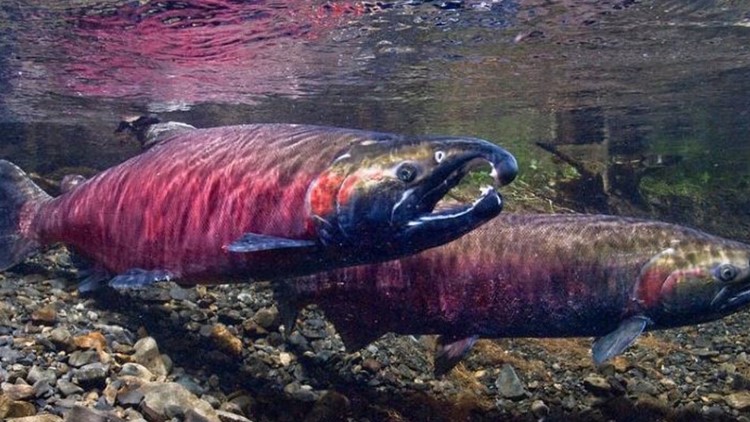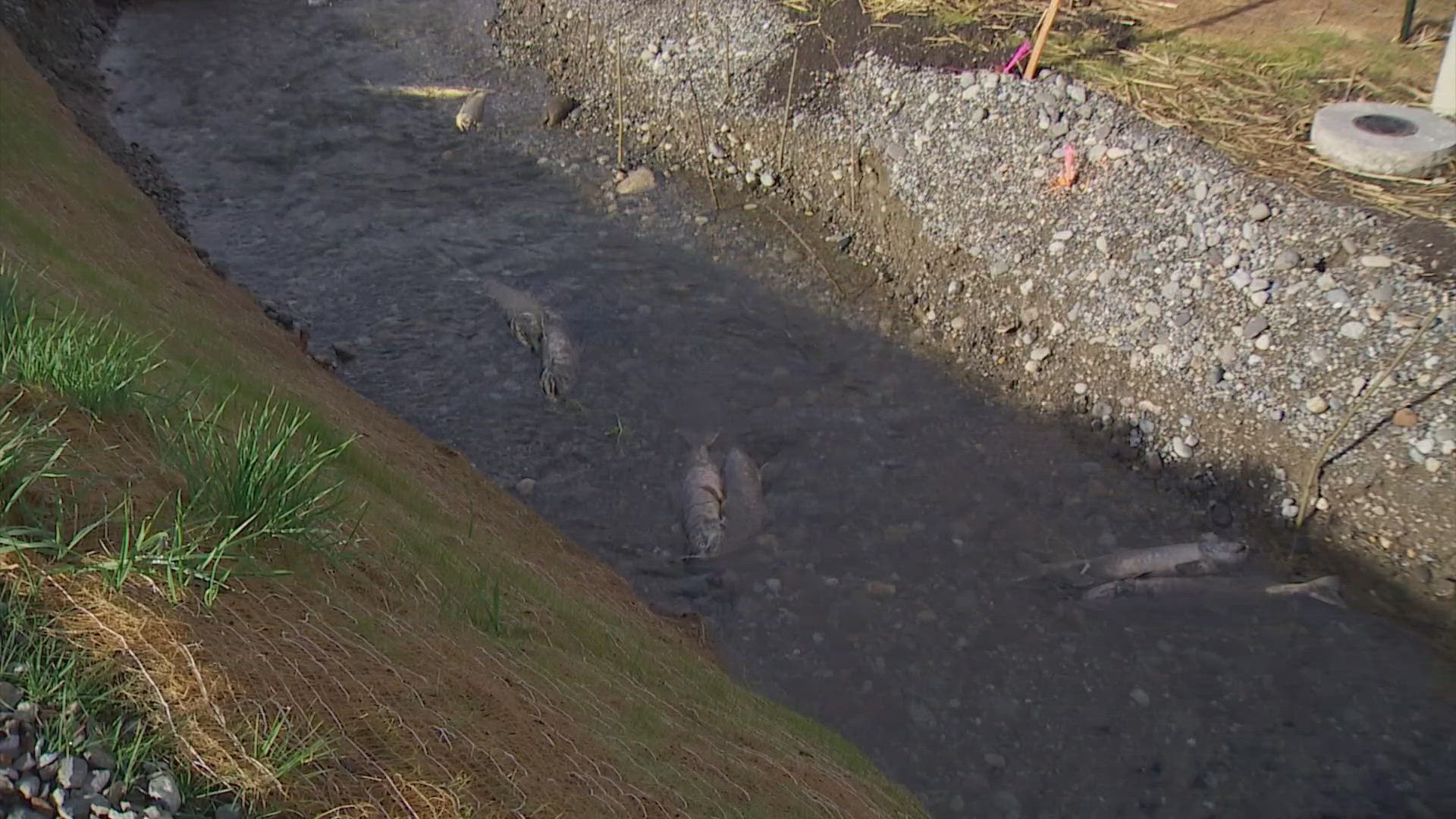CHEHALIS, Wash. — Two miles of the Middle Fork of the Newaukum River near Chehalis will be open to Coho salmon this Fall, marking the first of more than 201 miles of streams in Washington getting barriers to fish passage removed in the next few years.
The Brian Abbott Fish Barrier Removal Board has invested $46.2 million dollars since 2014 to coordinate the removal of barriers that block salmon and steelhead from reaching prime spawning and rearing habitat on state, local, tribal and private land. More than 20 counties are funded and planned across Washington.
“This first project is an incredible achievement for the board, the people of Washington, and our environment,” said Kaleen Cottingham, director of the Washington State Recreation and Conservation Office. “In addition to improving access for fish, these projects also will enhance the roads that cross over them, support public safety, and protect our communities from flooding.”
Salmon culverts have long been a highly publicized problem in Washington state, causing drops in the salmon population and making it harder for the fish to swim upstream.
Projects are funded by the state and supported by a variety of community members, including tribes, fishermen, and activists.


“The projects funded by the Brian Abbott Fish Barrier Removal Board are building on previous fish passage investments by local governments, landowners, and the Washington State Department of Transportation,” said Tom Jameson, WDFW fish passage manager and chair of the Brian Abbott Fish Barrier Removal Board. “We appreciate the Legislature’s continued support of these salmon and orca recovery efforts.”
Board members include representatives from the Washington Departments of Transportation and Natural Resources, Washington State Association of Counties, Association of Washington Cities, the Governor’s Salmon Recovery Office, the Confederated Tribes and Bands of the Yakama Nation, the Confederated Tribes of the Colville Reservation and the salmon recovery Council of Regions.



